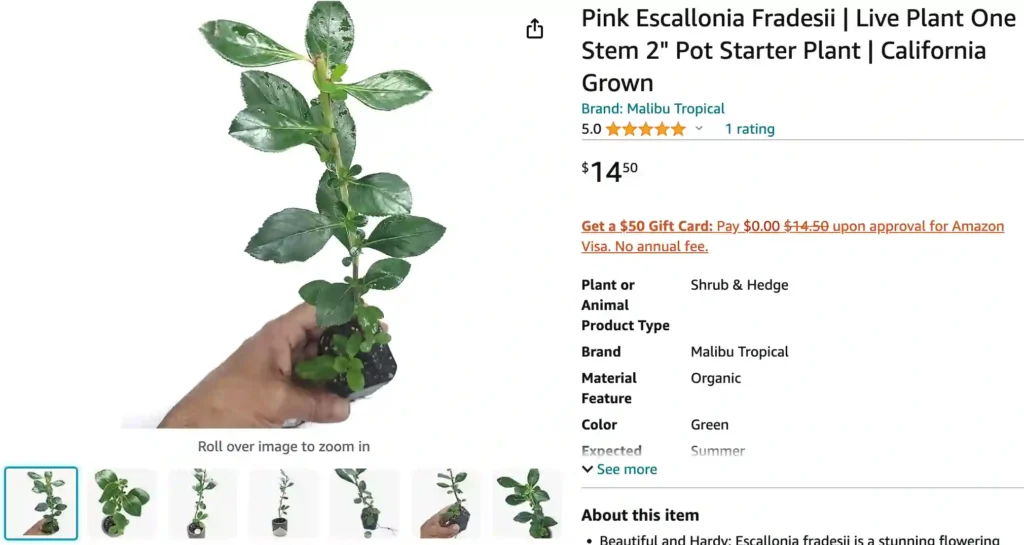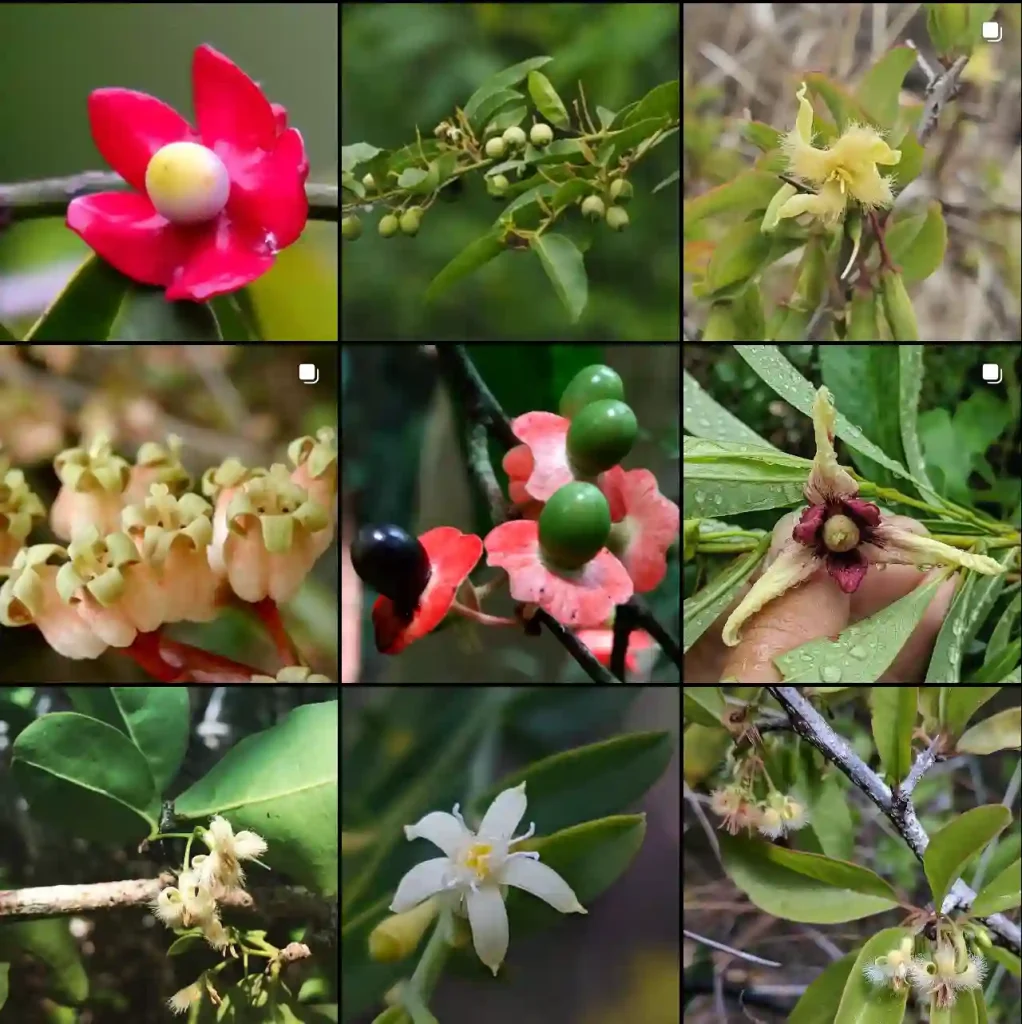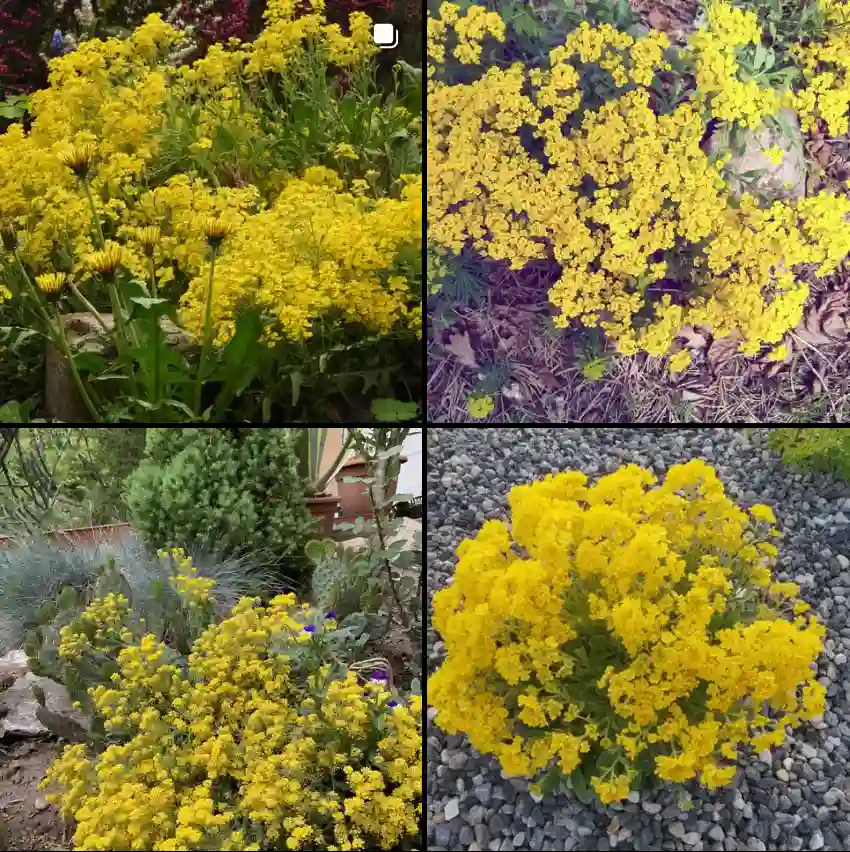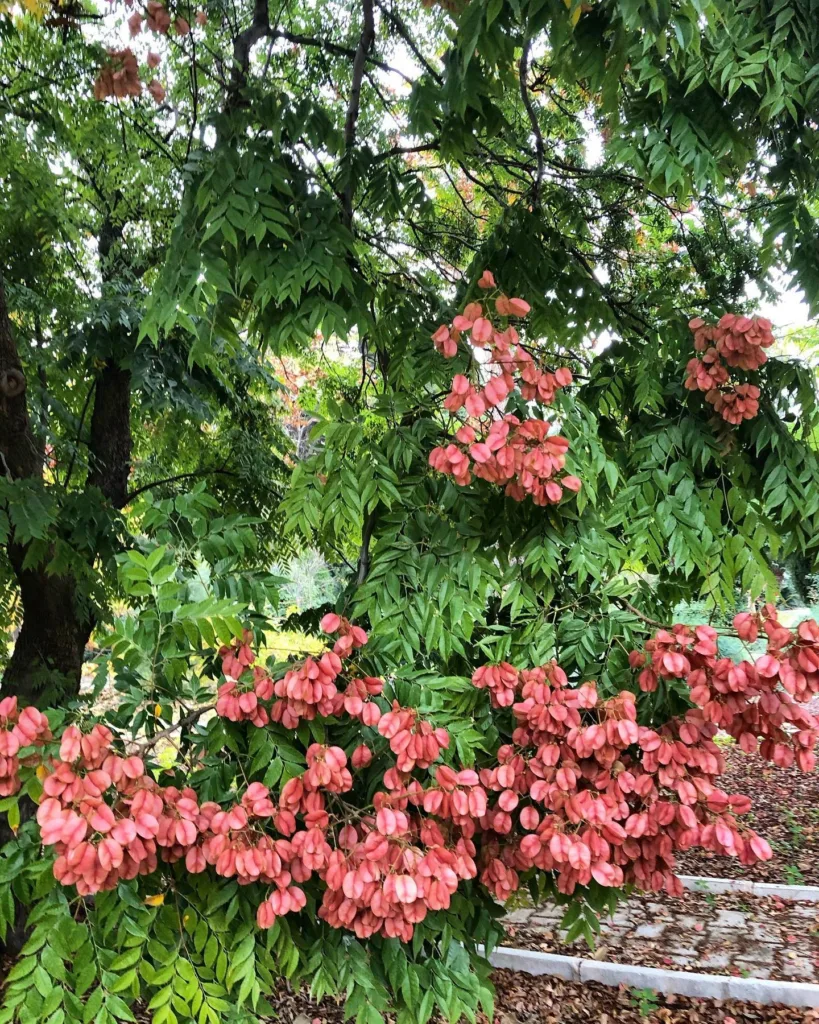July 23 – Escallonia
"Escallonia, the flowering hedge, defines July 23."
Escallonia symbolizes protection and charm. You are warm and inviting, providing a safe haven for others. Like this plant, you offer strength and comfort in times of need.

My Love Affair with Escallonia
I, Ferb Vu, have always been drawn to the natural world. The vibrant colors, the diverse textures, the sheer resilience of life in all its forms. But if I were to pick a particular favorite, a genus that truly captures my heart, it would be the Escallonia from the Escalloniaceae family.
These South American beauties, with their glossy evergreen leaves and profuse blooms, have an undeniable charm. Imagine a shrub, sometimes even a small tree, covered in clusters of delicate flowers, ranging from pure white to deep crimson, and you have a picture of an Escallonia in its glory.
A Diverse Genus
The Escallonia genus is surprisingly diverse, boasting 49 recognized species. Here are:
- Escallonia alpina Poepp. ex DC.
- Escallonia angustifolia C.Presl
- Escallonia bifida Link & Otto
- Escallonia × bracteata Phil.
- Escallonia callcottiae Hook. & Arn.
- Escallonia carmelitana Meyen
- Escallonia chlorophylla Cham. & Schltdl.
- Escallonia cordobensis (Kuntze) Hosseus
- Escallonia × demissa Eastw.
- Escallonia discolor Vent.
- Escallonia farinacea A.St.-Hil.
- Escallonia florida Poepp. ex DC.
- Escallonia gayana Acevedo & Kausel
- Escallonia harrisii F.Zapata & Villarroel
- Escallonia herrerae Mattf.
- Escallonia hispida (Vell.) Sleumer
- Escallonia hypoglauca Herzog
- Escallonia illinita C.Presl
- Escallonia laevis (Vell.) Sleumer
- Escallonia ledifolia Sleumer
- Escallonia × lepidota Killip
- Escallonia leucantha J.Rémy
- Escallonia megapotamica Spreng.
- Escallonia micrantha Mattf.
- Escallonia millegrana Griseb.
- Escallonia × mollis Phil.
- Escallonia myrtilloides L.f.
- Escallonia myrtoidea Bertero ex DC.
- Escallonia obtusissima A.St.-Hil.
- Escallonia paniculata (Ruiz & Pav.) Schult.
- Escallonia pendula (Ruiz & Pav.) Pers.
- Escallonia petrophila Rambo & Sleumer
- Escallonia piurensis Mattf.
- Escallonia polifolia Hook.
- Escallonia × promaucana Phil.
- Escallonia pulverulenta (Ruiz & Pav.) Pers.
- Escallonia × rebecae Kausel
- Escallonia resinosa (Ruiz & Pav.) Pers.
- Escallonia reticulata Sleumer
- Escallonia revoluta (Ruiz & Pav.) Pers.
- Escallonia × rigida Phil.
- Escallonia rosea Griseb.
- Escallonia rubra (Ruiz & Pav.) Pers.
- Escallonia salicifolia Mattf.
- Escallonia schreiteri Sleumer
- Escallonia serrata Sm.
- Escallonia × skottsbergii Acevedo & Kausel
- Escallonia tucumanensis Hosseus
- Escallonia virgata (Ruiz & Pav.) Pers.
Can escallonia be cut back hard?
Sure, escallonias can be cut back hard, but it’s best to do so in late winter or early spring before new growth begins. I learned this from experience after trimming mine back quite drastically one year to rejuvenate it, and it bounced back beautifully. However, it’s essential not to prune too late in the season, as it can affect the plant’s ability to recover.
Can you prune escallonia in winter?
Yes, you can prune escallonia in winter, but it’s crucial to wait until late winter or early spring. I’ve tried pruning in winter before, and it didn’t turn out well. The plant struggled to recover, and I learned the hard way that pruning during the dormant season isn’t ideal for escallonias.
Do deer eat escallonia?
Deer typically don’t eat escallonia, which is a relief for me because deer are quite common in my area. I’ve noticed that even when other plants in my garden are nibbled on by deer, they tend to leave my escallonias alone. It’s one less thing to worry about in terms of wildlife management in my garden.
How do you rejuvenate escallonia?
Rejuvenating escallonia is quite simple. I’ve successfully rejuvenated mine by cutting it back quite hard in late winter or early spring. This encourages fresh, new growth and helps maintain the plant’s health and vigor. Just be sure not to prune too late in the season to allow enough time for recovery before the next growing season.
How fast does escallonia grow?
Escallonia can grow quite fast under the right conditions. From my experience, I’ve noticed significant growth spurts, especially during the growing season. With proper care and maintenance, you’ll likely see noticeable growth each year, which is great if you’re looking to establish a hedge or create a lush garden backdrop relatively quickly.
How tall does escallonia grow?
In terms of height, escallonia can vary depending on the specific variety and growing conditions. However, they typically range from about 3 to 10 feet tall. I’ve seen some varieties that stay more compact, making them suitable for smaller spaces or as low hedges, while others can grow taller and make a more substantial impact in the landscape.
How to care for escallonia?
Caring for escallonia is relatively straightforward. They prefer well-drained soil and full sun but can tolerate some partial shade. Regular watering, especially during dry periods, is essential, particularly when the plants are establishing. Mulching around the base can help retain moisture and suppress weeds. Pruning in late winter or early spring helps maintain their shape and encourages healthy growth.
How to propagate escallonia?
Propagating escallonia can be done through several methods, including taking semi-hardwood cuttings in late summer or early autumn. I’ve successfully propagated escallonia from cuttings by selecting healthy, non-flowering shoots and rooting them in a well-draining potting mix. With patience and proper care, these cuttings can develop into new, healthy plants.
Is escallonia deer resistant?
Yes, escallonia is generally considered deer-resistant, which is excellent news for gardeners like me who have to contend with deer browsing on their plants. While no plant is entirely deer-proof, I’ve found that escallonias are typically left untouched by deer in my garden, making them a reliable choice for landscaping in areas with deer populations.
Is escallonia evergreen?
Escallonia is indeed evergreen, which is one of its appealing qualities for landscaping. Even in colder climates, they retain their foliage year-round, providing structure and color to the garden, even during the winter months. This evergreen nature makes them versatile for use as hedges, borders, or standalone specimens in the landscape.
Is escallonia poisonous?
As far as I know, escallonia is not considered poisonous to humans. I’ve never had any issues with toxicity related to handling or being near escallonia plants in my garden. However, it’s always a good idea to practice caution and avoid ingesting any part of the plant, just to be safe.
Is escallonia poisonous to dogs?
I’m not entirely sure if escallonia is poisonous to dogs, but I always err on the side of caution when it comes to pets and plants. It’s a good idea to research further or consult with a veterinarian if you’re concerned about potential toxicity to dogs. Keeping pets away from plants they’re unfamiliar with is generally a good practice to prevent any accidental ingestion.
What does escallonia look like?
Escallonia has a distinct appearance characterized by glossy, dark green leaves and clusters of small, colorful flowers. The leaves are typically lance-shaped and arranged alternately along the stems, creating a dense, bushy growth habit. The flowers can vary in color depending on the variety, with shades of white, pink, or red being common.
When does escallonia flower?
Escallonia typically flowers in late spring to early summer, depending on the specific variety and growing conditions. I always look forward to the burst of color when my escallonias come into bloom. The flowers are small but plentiful, forming clusters that attract pollinators like bees and butterflies to the garden.
Where to buy escallonia plants?
You can buy escallonia plants from various nurseries, garden centers, or online retailers that specialize in selling shrubs and perennials. I’ve purchased escallonia plants from both local nurseries and online stores, and they’ve always arrived in good condition and ready to thrive in my garden.
Can escallonia be grown in pots?
Yes, escallonia can be grown in pots, but it’s essential to choose a container large enough to accommodate the plant’s root system and provide adequate drainage. I’ve seen beautiful displays of escallonias grown in pots on patios, balconies, or even as specimen plants in larger containers. Just be sure to water and fertilize regularly to keep them healthy and thriving.
Does escallonia make a good hedge?
Escallonia makes an excellent hedge plant, thanks to its dense growth habit and evergreen foliage. I’ve seen stunning hedges created with escallonias in various landscapes, providing privacy, structure, and visual interest year-round. Regular pruning helps maintain the hedge’s shape and encourages dense growth.
How far apart to plant escallonia hedge?
When planting an escallonia hedge, spacing will depend on the specific variety and desired density of the hedge. As a general rule of thumb, I space my escallonia plants about 2 to 3 feet apart to allow for ample growth and fill in any gaps over time. This spacing ensures a lush, full hedge once the plants mature.
Is escallonia frost hardy?
Escallonia is generally frost hardy, although some varieties may be more tolerant of cold temperatures than others. In my experience, I’ve seen escallonias withstand frost and even light snow without any significant damage. However, in areas with harsh winters, providing some protection, such as mulching around the base of the plant, can help mitigate potential frost damage.
Is escallonia poisonous to sheep?
I’m not entirely sure if escallonia is poisonous to sheep, but it’s always a good idea to research further or consult with a veterinarian if you’re concerned about potential toxicity to livestock. While escallonia is generally considered safe for humans and most pets, it’s essential to exercise caution when introducing any new plant species into areas where livestock graze.
When is the best time to prune escallonia?
The best time to prune escallonia is in late winter or early spring before new growth begins. I’ve found that pruning during this time helps promote vigorous growth and ensures the plant’s health and vitality throughout the growing season. Avoid pruning too late in the season, as it can affect the plant’s ability to recover and potentially reduce flowering.
Why are the leaves on my escallonia turning yellow?
Yellowing leaves on escallonia can be a sign of various issues, including nutrient deficiencies, water stress, or pests. I’ve encountered yellowing leaves on my escallonia plants before and found that adjusting watering habits and providing a balanced fertilizer can often help alleviate the problem. However, if the issue persists, it’s essential to investigate further to determine the underlying cause and address it accordingly.
Why is my escallonia dying?
If your escallonia is dying, it could be due to various factors, including root rot, pest infestations, or environmental stress. I’ve experienced the loss of escallonia plants in my garden before and learned that prompt action is essential to try and save the plant. Assessing the plant’s growing conditions, such as soil moisture and drainage, and addressing any issues promptly can help improve its chances of survival.
Why is my escallonia not flowering?
Escallonia may not flower if it’s not getting enough sunlight, nutrients, or proper pruning. I’ve had escallonia plants that didn’t flower, and after some investigation, I realized they were planted in too much shade. Moving them to a sunnier spot and providing regular pruning to promote new growth often encourages flowering in subsequent seasons.
Will escallonia grow in shade?
While escallonia prefers full sun, it can tolerate some shade, but flowering may be reduced in shady conditions. I’ve seen escallonias planted in partially shaded areas in my garden, and while they still grew well, they didn’t produce as many flowers as those planted in full sun. If you’re growing escallonia in a shady spot, be prepared for potentially fewer blooms.
Are escallonia roots invasive?
Escallonia roots are generally not considered invasive, but like most shrubs, they can spread over time. I’ve planted escallonias in various locations in my garden, and I’ve never encountered issues with invasive root systems. However, it’s always a good idea to monitor their growth and prune as needed to keep them in check.
Are escallonia same as hydrangeas?
No, escallonia and hydrangeas are not the same plants. While they may have similar-sized leaves and grow in similar conditions, they belong to different plant families and have distinct characteristics. Escallonia is known for its glossy, evergreen foliage and small, colorful flowers, while hydrangeas are prized for their large, showy blooms that can change color depending on soil pH.
Can i move an escallonia?
Yes, you can move an escallonia, but it’s essential to do so with care to minimize stress on the plant. I’ve successfully transplanted escallonia plants in my garden by digging up the root ball and replanting it in a new location. It’s best to do this during the dormant season in late winter or early spring to give the plant the best chance of establishing itself in its new spot.
Do bees like escallonia?
Bees are attracted to the flowers of escallonia, making it a valuable plant for pollinators in the garden. I’ve observed bees buzzing around my escallonia plants when they’re in bloom, collecting pollen and nectar to take back to their hives. Providing food sources for bees is essential for supporting healthy populations and promoting biodiversity in the garden.
Do hummingbirds like escallonia?
While I haven’t personally observed hummingbirds visiting my escallonia plants, it’s possible that they may be attracted to the flowers for their nectar. Hummingbirds are known to feed on a variety of flowering plants, especially those with tubular-shaped flowers that are rich in nectar. Creating a diverse garden with a range of flowering plants can help attract hummingbirds and other pollinators.
If i die, water my plants!



